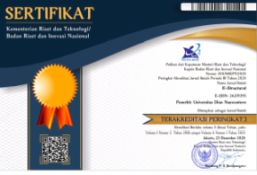Error Analysis on English Translation from Indonesian on Public Facilities in Semarang City
Abstract
Full Text:
PDFReferences
Dulay, Heidi., 2002. Marina Burt and Stephen Krashen. 1982. Language Two. London: Oxford University Press.
James, Carl, 1998. Errors in Language Learning and Use. Singapore: Singapore: Wesley Longman Singapore Ltd.
Richard, Jack C. 1974. Error Analysis, Perspective in Second Language Acquisition, London: Longman Group Ltd.
Catford, J.C. 1965. A Linguistics Theory of Translation. Oxford: Oxford University Press.
Nida & Taber. 1969. Theory and Practices of Translation. Leiden: E.J Brill
Sudaryanto. 1993. Metode dan Aneka Teknik Analisis Bahasa. (Pengantar Penelitian Wacana Kebudayaan secara Linguistik). Yogyakarta: Duta Wacana
Venuti, Lawrence. 2000. The Translation Studies Reader. London: Routledge.
Vinay, J.P.and Darbelnet, J. (1958/2000).A Methodology for Translation. [An excerpt from Comparative Stylistics of French and English: A Methodology for Translation, trans. and eds. J. C. Sager & M.J. Hamel, Amsterdam: John Benjamins, 1995, first published in 1958 as Stylistique comparée du français et de l’anglais. Méthode de traduction] In L. Venuti (Ed.), The Translation Studies Reader(pp. 84–93). London: Routledge
DOI: https://doi.org/10.33633/es.v2i1.2493
Article Metrics
Abstract view : 785 timesPDF - 590 times
Refbacks
- There are currently no refbacks.
Accredited by:
Indexed by:
In Collaboration with:

This work is licensed under a Creative Commons Attribution 4.0 International License.

























